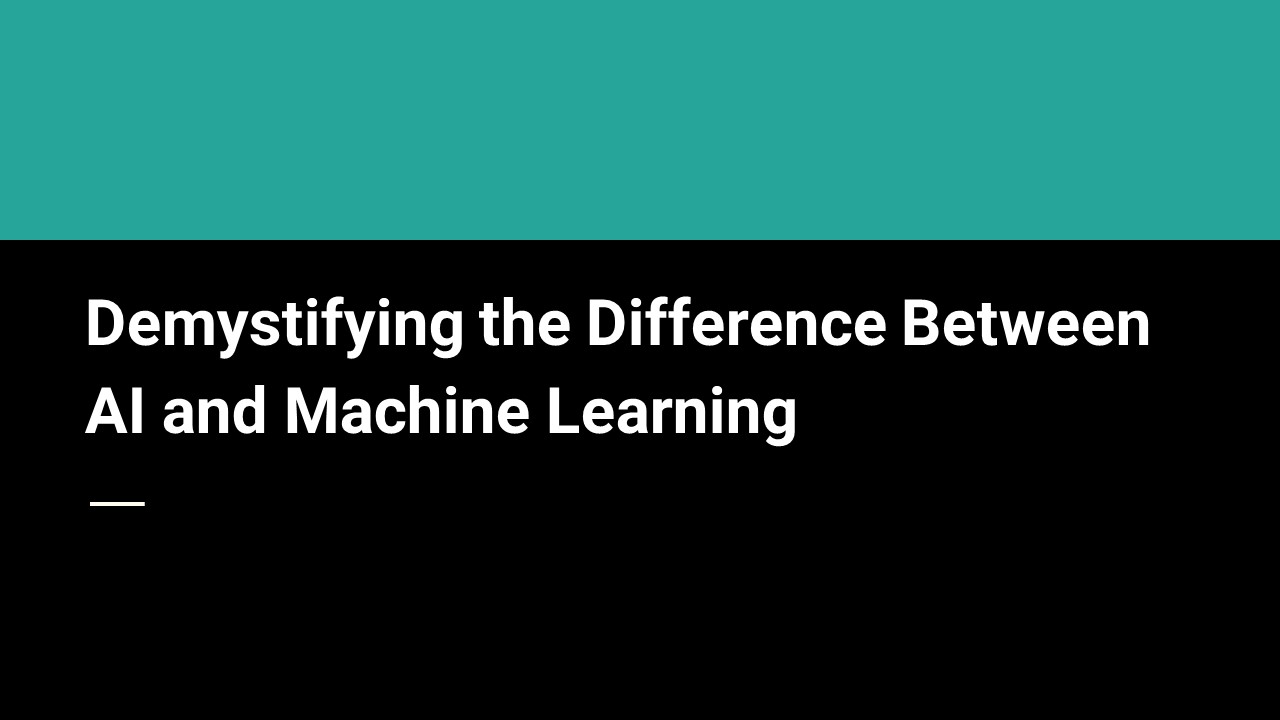The Ultimate Guide On Difference Between AI And Machine Learning (1) - PowerPoint PPT Presentation
Title:
The Ultimate Guide On Difference Between AI And Machine Learning (1)
Description:
Discover the difference between AI and Machine Learning in this concise guide. Explore the fundamental dissimilarities, applications, and key features of each. – PowerPoint PPT presentation
Number of Views:0
Title: The Ultimate Guide On Difference Between AI And Machine Learning (1)
1
Demystifying the Difference Between AI and
Machine Learning
2
Demystifying the Difference Between AI and
Machine Learning
- In today's rapidly advancing technological
landscape, terms like artificial intelligence
(AI) and machine learning (ML) have become
ubiquitous. They are often used interchangeably,
leading to confusion and misconceptions about
their true nature. While AI and ML are
interconnected, they are distinct concepts with
their own unique characteristics and
applications. In this blog post, we will delve
into the fundamental differences between AI and
ML to shed light on their individual roles in
shaping our digital world.
3
Defining Artificial Intelligence (AI)
- Artificial intelligence refers to the broader
field of computer science that aims to create
intelligent machines capable of simulating
human-like intelligence. AI encompasses a wide
range of techniques, algorithms, and
methodologies that enable machines to perceive,
reason, learn, and make decisions. It encompasses
both the hardware and software components
necessary to build intelligent systems. - AI can be further categorized into two types
Narrow AI and General AI. Narrow AI, also known
as weak AI, is designed to perform specific tasks
with a high degree of proficiency, such as image
recognition, voice assistants, or recommendation
systems. On the other hand, General AI, often
referred to as strong AI or human-level AI, is
hypothetical and represents the concept of
machines that possess human-like intelligence
across a broad spectrum of tasks.
4
Understanding Machine Learning (ML)
- Machine learning is a subset of AI that focuses
on the development of algorithms and statistical
models that enable computer systems to learn from
data and improve their performance without
explicit programming. In essence, ML empowers
machines to automatically learn patterns, extract
insights, and make predictions or decisions based
on the data they have been trained on. - The key characteristic of ML is its ability to
iteratively learn from data and adapt its models
or algorithms to optimize performance. It
involves the use of various algorithms, such as
decision trees, support vector machines, neural
networks, and more, to process and analyze data,
uncover patterns, and make predictions or
classifications.
5
Distinguishing AI from ML
- Scope and Purpose
- AI encompasses a broader field of study that aims
to replicate human-like intelligence in machines,
including problem-solving, perception, reasoning,
and decision-making. - ML, on the other hand, is a subset of AI that
focuses on training machines to learn from data,
make predictions, and improve performance over
time. - Dependency on Data
- AI systems may or may not rely heavily on data,
as they can operate based on predefined rules and
logic. - ML heavily relies on data for training, as it
learns patterns and makes predictions based on
the information it has been exposed to.
6
Distinguishing AI from ML
- 3. Level of Autonomy
- AI systems can exhibit varying degrees of
autonomy, ranging from predefined rules to
adaptive decision-making based on the environment
and available data. - ML systems can autonomously learn from data and
make predictions, but their autonomy is confined
to the specific domain they have been trained on. - 4. Human-Like Intelligence
- AI aims to replicate human-like intelligence
across multiple tasks, while also encompassing
areas like natural language processing, computer
vision, and robotics. - ML, while impressive in its own right, does not
necessarily seek to achieve human-level
intelligence but focuses on improving specific
tasks through data-driven learning.
7
- Thank You!!!































